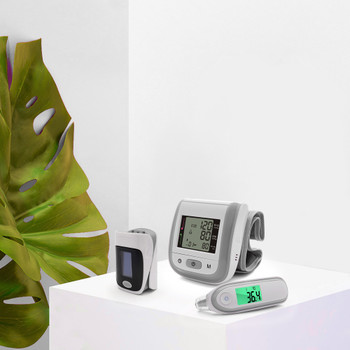Description
How does a pulse oximeter work?
To get the most accurate reading on a pulse oximeter, there are a few simple steps,
- Position the probe correctly. Depending on the device, this will usually be on the finger, toe, or earlobe. Make sure it is well-fitted, and not being forced on: for example, try the second toe rather than the big toe. If the probe is too loose or too tight, it may allow extra light in, which will impact the reading.
- Make sure you're sitting still. Shaking or shivering will affect the reading, and may make it seem much lower than it actually is.
- Remove any nail polish. If you're wearing colored nail polish, this might affect the reading. Finger tattoos or henna dye can also affect the reading: in this case, choose a different finger, toe, or earlobe. Cold fingers or toes can also cause false readings.
- Battery not included
There are many types of pulse oximeters, which come with varying features and are sold at a range of prices, so you'll want to find the Pulse Oximeter for your purposes.
A 2016 between the accuracy of the pocket or standard pulse oximeter found that the standard oximeter had a precision error of 1.8%, while the pocket version showed 2.21% error. One 2021 of pulse oximeters used in heart patients suggested that earlobe probes had greater accuracy.
If you think your pulse oximeter might not be accurate, Rizzo suggests checking the pulse reading or heart rate on the pulse oximeter against Pulse Oximeter
What does a pulse oximeter measure?
A Oximeter measures the oxygen saturation of your blood. Essentially, this percentage is a calculation of how much oxygen is in the blood, with 100% being 'fully saturated' and the optimal level.
And while this simple non-invasive medical tool is available over the counter in many pharmacies, it's not necessary for most people.
"Unless you have a chronic heart or lung condition that affects your oxygen saturation on a regular basis, most individuals don't need one in their home," says Albert Rizzo, MD, Chief Medical Officer.
Those with lung or heart conditions — such as chronic obstructive pulmonary disease (COPD)may be prescribed says Rizzo, and a pulse oximeter can help them to monitor whether the use of oxygen at home is improving their condition or not.
have also been used to indicate severe cases of COVID-19. That's because the coronavirus can cause a decrease in blood oxygen levels — though if this occurs, it's likely that you'll recognize other symptoms before needing to use a pulse oximeter.
In fact, Rizzo says that oxygen saturation by itself is often not the best indicator of medical conditions, and other symptoms are just as important to tell your doctor.
Other warning signs of low blood oxygen levels may include:
- Increased heart rate
- increased breathing rate
- Feeling shortness of breath or gasping for air
- Inability to do an activity that you did before without getting out of breath
For everyday health, you shouldn't rely on pulse oximeter readings alone, says William Berry, Research Scientist at The oximeter numbers are only estimates of your blood oxygen levels — and they should be taken in context.




















